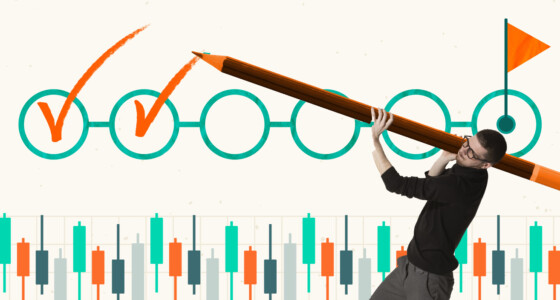

Anyone can start trading if they have the capital to do so. But to be really good at trading, you need to be good at risk management, have a solid strategy in place, and know the stock trading styles.
Master traders all have their own personal trading styles and strategies that they follow. Maybe our article today can help you find yours.
Skills any trader should learn
Before we get into the types of trading style, let’s take a look at something on a more basic level, trading skills:
- Thorough research and analysis skills for the market
- Mathematical and numeracy abilities
- Keeping emotions in check under pressure
- Self-control skills
- Risk management skills
- Fast learning and adaptation skills

4 common trading styles
If we get into the question “what are trading styles?” this is going to be a much longer read than we intend. We’re not even going to factor in the unique trading styles that might include crypto trading styles.
Instead, we’ll simply get you started with the 4 different trading styles that are most common in the industry:
1. Day trading
Day trading is for those people that would like to turn trading into a profession. Essentially if you trade during the daylight hours, that is day trading. You would open positions during the day and close them as you end your trading at the end of the day.
Day trading removes the threat of overnight risk since you aren’t holding the added opportunities of international trading based on your local time. Day trading goes by very fast and to take advantage of it, traders should have extensive knowledge on the overall market.
Some of the cons of Day Trading include more charges. Since you’re closing up your positions at the end of the day every day, you’re liable to pay more transaction fees.
2. Long-term or Positional trading
This is a kind of trend trading. Based on the market trends of the day or the month, traders may keep their positions open between several weeks. Using a number of methods and charts, positional traders are able to accurately predict the trend of the security they are trading for.
Since this type of trading is so lenient with the time, traders are able to leverage more assets without the risk of loss. It’s also a lot less stressful considering the fact that it’s not an active method of trading.
Despite all of that, the first and foremost skill a trader needs to be able to do well in the long-term market is analytical abilities. The ability to recognize fluctuations and their potential consequences is key to understanding the trend.
3. Scalping
This one is an active trading method that requires traders to be quick on their feet. Scalps are short-term trades with the end goal being a small profit from each trade which collectively results in big gains. To succeed in these types of trades, you really need to know your stops and have great discipline.
Scalping is less risky since traders don’t tend to leave the position open for too long. Also, with a more diversified portfolio, traders expose themselves to more potential profits, along with risks of course.
Scalping also requires a lot of transaction fees since you’re opening and closing so many positions within a short amount of time. This style also requires the most time invested since you’ll need to keep track of every single trade and the moderate profits that you’re making.
4. Swing Trading
Swing traders are the opportunistic scavengers of the trading industry. This isn’t to say that swing traders don’t have strategies and only rely on opportunity. But they make their decisions based on the economic conditions of the market.
If traders believe the price of a security might rise in the near future, they make a point to purchase it when the price is low. And if the price might fall in the near future, they sell their existing securities to make a profit. This type of trading usually results in more than decent returns for each trade.
However, traders might face the other side of the coin with the potential for more losses per trade as well.

Which trading style is best for you?
To find the style that suits you best, you need to take into account your goals, the amount of capital you’re willing to spend, your other obligations and your trader personality.
There are plenty of other trading styles besides the four we mentioned. And all of them have one thing in common: discipline. So, do some more market research on the different styles and you should find the one that suits you best.
Concluding today’s session
Trading can be a risky if you’re not sure about your strategies. But once you have a trading style and are well-versed on the ins and outs of the market, you’re on your way to become a master trader.









